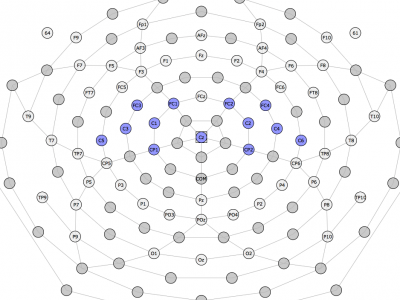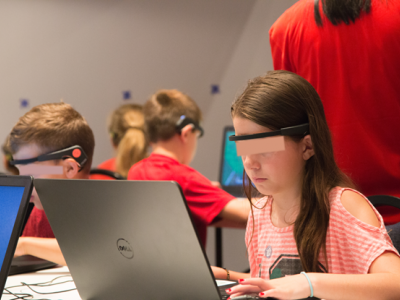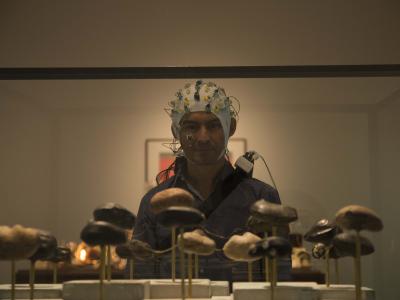Neuroscience

Previous neuroimaging research has been traditionally confined to strict laboratory environments due to the limits of technology. Only recently have more studies emerged exploring the use of mobile brain imaging outside the laboratory. This study uses electroencephalography (EEG) and signal processing techniques to provide new opportunities for studying mobile subjects moving outside of the laboratory and in real world settings. The purpose of this study was to document the current viability of using high density EEG for mobile brain imaging both indoors and outdoors.
- Categories:
 1195 Views
1195 ViewsElectroencephalography (EEG) signal data was collected from twelve healthy subjects with no known musculoskeletal or neurological deficits (mean age 25.5 ± 3.7, 11 male, 1 female, 1 left handed, 11 right handed) using an EGI Geodesics© Hydrocel EEG 64-Channel spongeless sensor net. All subjects gave their informed consent for inclusion before they participated in the study. The study was conducted in accordance with the Declaration of Helsinki, and the protocol was approved by the Ethics Committee of the University of Wisconsin-Milwaukee (17.352).
- Categories:
 1440 Views
1440 ViewsA quantitative understanding of how sensory signals are transformed into motor outputs places useful constraints on brain function and helps reveal the brain's underlying computations. Here we present over 8,000 animal hours of behavior recordings to investigate the nematode C. elegans' response to time-varying mechanosensory signals. We use a high-throughput optogenetic assay, video microscopy and automated behavior quantification.
- Categories:
 794 Views
794 ViewsOne of the grand challenges in neuroscience is to understand the developing brain ‘in action and in context’ in complex natural settings. To address this challenge, it is imperative to acquire brain data from freely-behaving children to assay the variability and individuality of neural patterns across gender and age.
- Categories:
 2610 Views
2610 ViewsRecent advances in scalp electroencephalography (EEG) as a neuroimaging tool have now allowed researchers to overcome technical challenges and movement restrictions typical in traditional neuroimaging studies. Fortunately, recent mobile EEG devices have enabled studies involving cognition and motor control in natural environments that require mobility, such as during art perception and production in a museum setting, and during locomotion tasks.
- Categories:
 4047 Views
4047 ViewsThis dataset is associated with the paper, Jackson & Hall 2016, which is open source, and can be found here: http://ieeexplore.ieee.org/document/7742994/
The DataPort Repository contains the data used primarily for generating Figure 1.
- Categories:
 2419 Views
2419 Views







